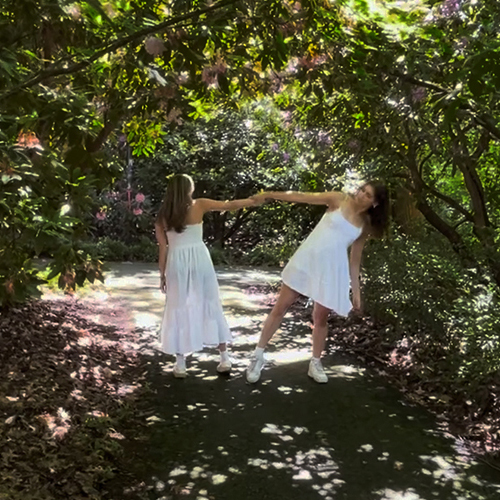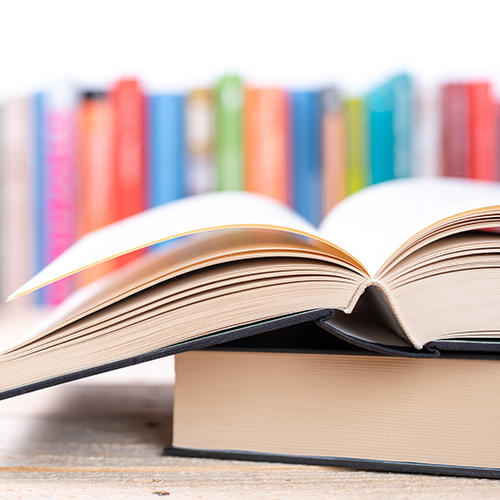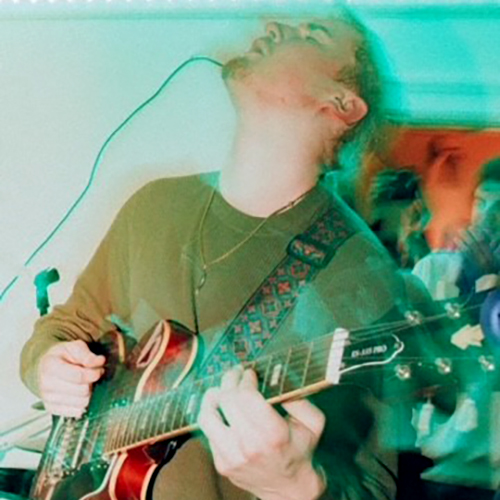Visitors to the current exhibition, Ann Hamilton: the common S E N S E, are encouraged to take home text fragments on the subject of touch, presented on newsprint sheets throughout the museum. And they are invited to give by submitting text selections from their own reading, some of which will be added to the exhibition. This textual give-and-take is one of several opportunities to actively engage with the show.
Much of the inspiration for the show came from Hamilton’s exploration of the UW campus. As a Visiting Fellow, Hamilton visited Suzzallo Library, the Burke Museum, the Henry and its collections, the Theodor Jacobsen Observatory, and many other campus gems to get a better handle on what the University of Washington has to offer. “It was a chance to lift my finger and stick it in the air and use that as a kind of periscope,” says Hamilton. “And I was always thinking, from the beginning, about the connection of the Henry to the rest of the University.”

Hamilton found herself returning to sites that elicited strong emotions. Particularly compelling was a lab in the Burke Museum where animal specimens are prepared for research use. “In one of my early tours at the Burke, there was a little Olympic marmot, its vulnerable stomach side up, and as I looked at the articulation of its appendages I recognized my own hand,” recalls Hamilton. “I’ve long been interested in the relationship between animals and humans, so that was a very powerful experience. From that moment, I became very excited about the possibility of working with the Burke collection.” the common S E N S E includes dozens of items from the Burke, ranging from a late 19th century child’s parka made with Harbor seal gut to a bird skin pouch to the Olympic marmot that provided early inspiration.
The Burke’s willingness to open its collections and labs to Hamilton impressed Sylvia Wolf, the John S. Behnke Endowed Director of the Henry Art Gallery and curator of the exhibition. “Many objects at the Burke have their own cultural history,” says Wolf. “An artist asking to use them could have been problematic if there had not been a champion at the Burke. So it’s been an extraordinary collaboration, and a source of amazement and pride for me, all the people at the UW who have come together to bring this exhibit to life.” The UW Libraries, the School of Music, and Digital Arts and Experimental Media have also been important partners.

Visitors to the museum’s lower level will see many garments from the Burke and the Henry on display, often with volunteers seated nearby, reading from a book and taking handwritten notes in a journal. The reader/scribes, each reading from the same book (starting with The Peregrine by J.A. Baker), are part of the exhibition. “The scribes can read to the animal specimens, or they can read to themselves. It’s not a performance,” Wolf notes. “It’s an opportunity to slow down and experience the words.” Other volunteers, working with Giselle Wyers, the Donald E. Petersen Associate Professor of Choral Music, perform two choral pieces that Wyers composed to complement the show. The singers have not participated as regularly as the reader/scribes, but their role is expected to increase as the exhibition continues.
The involvement of museum visitors is expected to increase as well. In addition to sharing texts about touch on the exhibition’s dedicated Tumblr site, visitors can choose to be photographed near the building lobby and their photo will be added to an expanding stack included in the show. Just the act of collecting texts and an animal photo has an impact on the exhibition—the text sheets will be replenished as needed, but the animal images will not.

“I think that one of the complications of this piece is this offering to take the images,” says Hamilton, “because when they are all gone they are really all gone, just as the animals are gone from the world. So it’s inviting you—but it’s inviting you to also pay attention.”
Wolf looks forward to seeing where all the threads of the exhibition lead over the next several months. When she offered Hamilton the entire museum, she anticipated that it would be an unforgettable journey, and she has not been disappointed.
“It’s a really complicated project with many moving parts,” she says. “There are so many levels of engagement that are possible—online, on site, with voice. We knew we were in uncharted territory from the start. We’ve all been stretched, and that’s been really exciting.”
Ann Hamilton: the common S E N S E is on view through April 26, 2015. Information about becoming a reader/scribe or submitting text is available on the Henry Art Gallery website.
More Stories

Dancing Across Campus
For the dance course "Activating Space," students danced in public spaces across the University of Washington's Seattle campus this spring.

Read or Listen to Faculty Favorites
Looking for book or podcast recommendations? We asked faculty who've been featured in Perspectives newsletter during the past academic year to suggest a personal favorite.

Celebrating Contemporary Indigenous Music
Markus Teuton, a musician and citizen of Cherokee Nation, explores contemporary Indigenous music through his academic work and as host of “Indigenous Jazz,” a radio show.